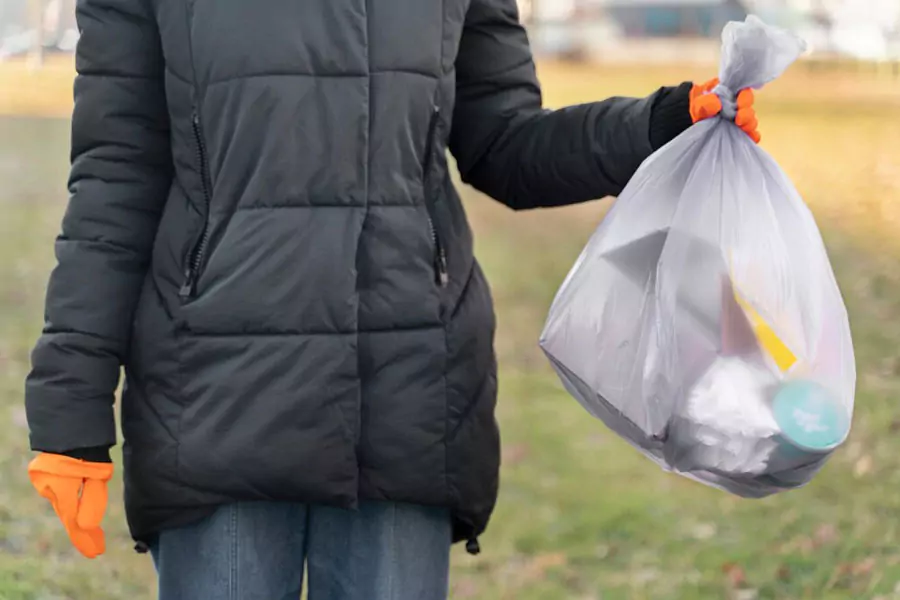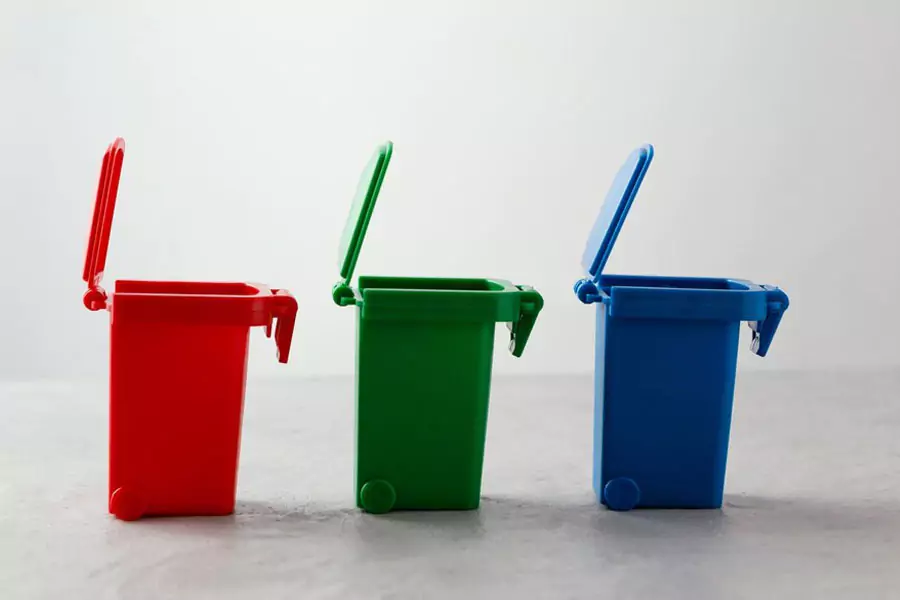
How to Choose the Right Trash Bag Size in Just Two Simple Steps
One detail that might seem minor but is actually important to waste management is the size of your trash bag. If it is too large, not only is more plastic being used, but more money is being wasted as well. Too small, and you’re stuck with frustrating tears and messy spills.
The good news? You don’t need a complicated formula or hours of trial and error. At ANS Plastics Corp., we’ve simplified it down to two easy steps that anyone can follow. As you read this piece, you will be able to correctly measure your trash can and choose the most appropriate bag for it.
Step 1: Determine the Trash Bag’s Width
Whether your trash can is round or square/rectangular will determine the calculations needed to get the correct width of your bag. Although the calculations are quite simple, their impact is great.

1. For Square or Rectangular Trash Cans
Grab your tape measure. Add up the perimeter (the sum of all four sides). Then divide that number by two. That’s the width of the trash bag you’ll need.
Example:
Suppose that you have a trash can with a perimeter of 36 inches. Let’s do the calculations:
36 / 2 = 18 inches
So, you should go for a garbage bag with an 18-inch width.
2. For Round Cans
For round/circular cans, you should consider the diameter (can’s width from one side to another) and multiply it by pi (3.14). Then divide that number by two. That final figure equals your bag’s width.
Example:
Suppose that the diameter of your round trash can is 20 inches:
20 x 3.14 = 62 inches
62 / 2 = 31 inches
So, the width of your garbage bag should be 31 inches.
By calculating the dimensions of your trash bag with this method, rest assured that the bag will fit neatly without stretching, tearing, or sliding down into the can.
Step 2: Determine the Height of the Trash Bag
After identifying the garbage bag’s width, it’s now time to find out the height.
Start by measuring the height of your trash can. Add 4 inches for overhang (so you can fold the bag over the rim). Then add half of the bag’s width (or diameter) to account for the bottom of the can.
Example:
For a Toter 60 Gallon Wheeled Trash Can:
- Can Height: 40 inches
- Diameter: 20 inches
- Overhang: 4 inches
- Half the Width: 10 inches
40 + 4 + 10 = 54 inches
So, you’ll need a 54-inch tall bag.
Pro Tip: There is no need to worry if your bag’s measurements are not in line with the calculation. It’s completely fine to round up or down a few inches. Your bag will still fit securely.
Quick Reference Trash Bag Size Chart
Here’s a handy guide that matches common wheeled trash can sizes with the right bag dimensions:
| Wheeled Trash Can Size |
Bag Dimension |
Bag Size |
| 20 Gallon |
40″W × 46″H |
40–45 Gallon |
| 24 Gallon |
40″W × 46″H |
40–45 Gallon |
| 32 Gallon |
40″W × 50″H |
55 Gallon |
| 35 Gallon |
40″W × 50″H |
55 Gallon |
| 45 Gallon |
50″W × 48″H |
65 Gallon |
| 48 Gallon |
50″W × 48″H |
65 Gallon |
| 50 Gallon |
50″W × 48″H |
65 Gallon |
| 64 Gallon |
50″W × 60″H |
65 Gallon |
| 65 Gallon |
50″W × 48″H |
65 Gallon |
| 95 Gallon |
61″W × 68″H |
95 Gallon |
| 96 Gallon |
61″W × 68″H |
95 Gallon |
One Last Detail: Thickness Matters
While the bag’s size inevitably takes precedence, its thickness warrants equal consideration. Both low-density and high-density plastic trash bags are evaluated in their thickness using mils and microns, respectively. It is evident that the thicker the bag, the more weight it can carry. Here’s the quick guide to consider:
- Everyday kitchen trash: The ideal garbage bag will be of 0.9 Mil.
- Heavier trash or sharp-edged items (like wood, yard waste, or cardboard): Go for a garbage bag of at least 1.5 Mil.
- Light trash (like bathroom waste, tissues, papers, etc.): Prefer thinner, high-density bags that save money without sacrificing performance.
At ANS Plastics Corp., we produce bags in many different thicknesses. This means that whether you are tidying up after dinner or undertaking a home renovation, you will have the right bag.

Why is it important to choose the Right Size Trash Bag?
You could ask yourself – are all these careful calculations necessary? Wouldn’t it be simpler to select a bag that visually approximates the one you want? While it looks simpler, the size that fits the best is the most important:
- Less waste: Overly large bags lead to excessive plastic use.
- Fewer messes: Small bags that are too small to tear or fall inside the can.
- Better efficiency: When the right size is used, the process of bagging, tying, and trash removal is streamlined.
- Saves money: There is no charge for additional plastic or for replacing torn bags.
Common Mistakes You Should Avoid
Even though the steps are simple, people often run into a few pitfalls:
- Guessing instead of measuring: This usually leads to wasted bags.
- Ignoring the overhang: Without those extra inches, the bag will fall inside the can.
- Forgetting thickness: A perfectly sized bag can still fail if it’s too thin for the job.
By following the two-step method and choosing the right thickness, you’ll avoid these issues.
Need Help? We’re Here for You
Measurements can be confusing, especially when it comes to trash, which covers a wide range of different gauges and sizes. When numbers don’t line up, take a deep breath. We’ve got you covered.
Our specialists at ANS Plastics Corp. are always available to assist you in selecting the right bags. Contact us via our customer service telephone or online chat, and we’ll guide you through every step.
Ready to Find Your Perfect Fit? Shop ANS Trash Bags Today
There is no need to guess when it comes to selecting a trash bag. With the width and height of the bag measured and combined with the right thickness, you will be assured of a strong, efficient, and reliable bag.
ANS Plastics Corp. ensures that waste management is worry-free, simple, and cost-effective. The next time you utilize a trash bag, don’t forget to measure, match, and move on! Never before has cleaning been easier!
